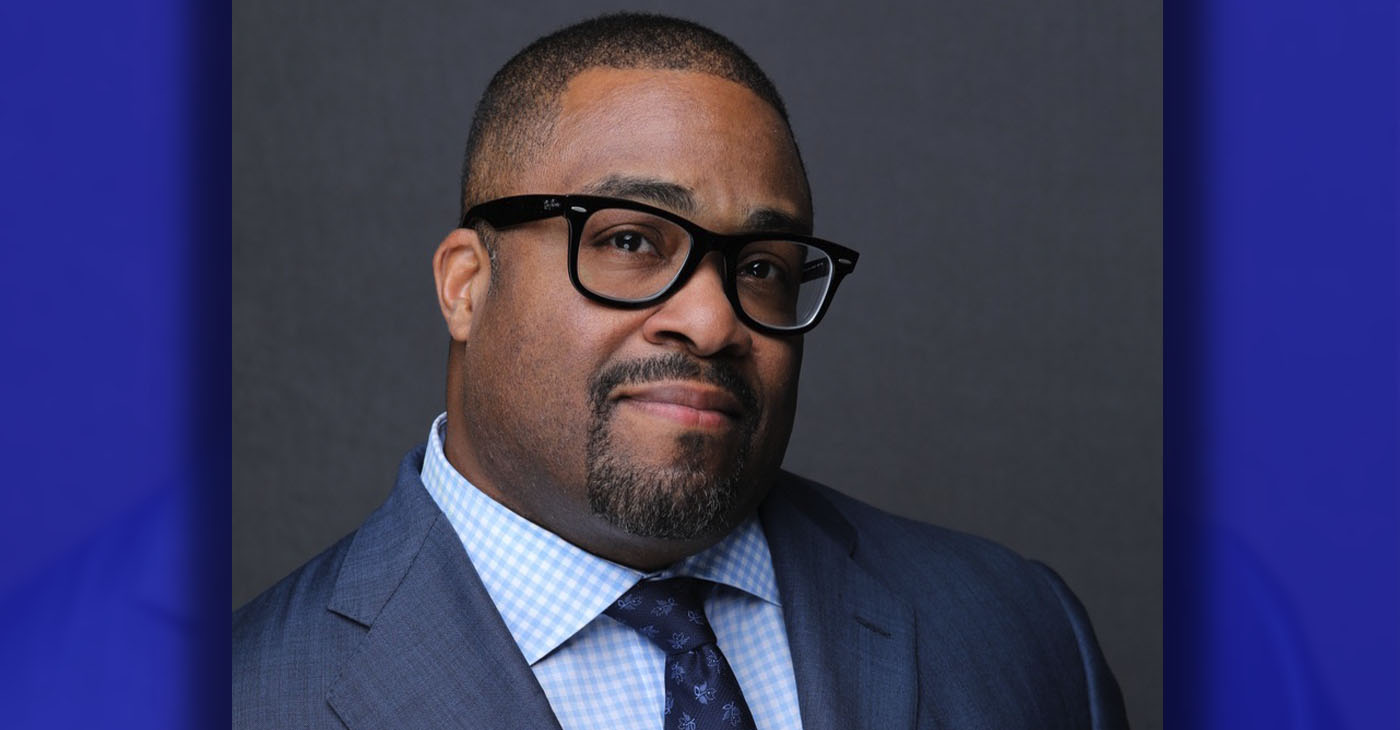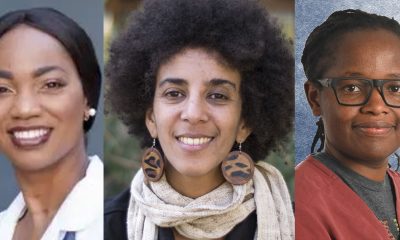Activism
CA/Hawaii NAACP Conference: “Dismantling Racism and Disrupting Inequality”
: Ida B. Wells-Barnett (1862–1931), a Black investigative journalist, women’s rights activist, and civil rights advocate, is renowned for her campaign against lynching. Wells-Barnett was instrumental in shaping public opinion against lynching through her newspaper editorials, pamphlets, clubs, and lecture tours across the northern United States.

By Antonio Ray Harvey
California Black Media
Ida B. Wells-Barnett (1862–1931), a Black investigative journalist, women’s rights activist, and civil rights advocate, is renowned for her campaign against lynching.
Wells-Barnett was instrumental in shaping public opinion against lynching through her newspaper editorials, pamphlets, clubs, and lecture tours across the northern United States. Wells held the position of secretary in the Afro-American Council, where she led its anti-lynching bureau. Her efforts paved the way for the National Association for the Advancement of Colored People’s (NAACP) anti-lynching campaign.
Following the racial violence of the 1908 Springfield massacre in Illinois, the NAACP was founded on Feb. 12, 1909. The organization was established by over 60 founding members, including Wells- Barnett, W. E. B. Du Bois, Mary McLeod Bethune, William Bulkley, the Rev. Francis Grimke, and Mary Church Terrell, among others.
The NAACP’s principal objective is to secure political, educational, social, and economic equality for minority groups in the United States and eradicate racial prejudice. As a service organization, it aims to remove all barriers of racial discrimination through democratic processes.
The NAACP is America’s oldest and largest civil rights organization and today comprises a network of over 2,200 affiliates spanning all 50 states, the District of Columbia, Japan, and Germany. Headquartered in Baltimore, its membership exceeds 500,000.
The NAACP California-Hawaii State Conference, with its 72 branches and youth units, is actively engaged across both states to promote racial justice and equality.
Rick L. Callender, who serves as president of the NAACP’s California/Hawaii State Conference and is a member of the National NAACP Board of Directors, spoke with California Black Media about the work the state conference is doing.
What does your organization do to improve the lives of Black people in California?
We’re committed to dismantling racism and disrupting inequality to create a society where all people can truly be free. Our efforts encompass active civic engagement, systematically fostering racial equity, and championing policies and institutions that urgently address the specific needs of Black communities, who bear the brunt of race- based discrimination.
What was your greatest success over the course of the last year?
(We) have been sticking to our long-lived goal of fighting for justice and prioritizing our community’s needs. In the past year, we notched up some significant victories with Gov. Newsom signing three of our priority bills into law, namely Assembly Bill (AB) 1327, Senate Bill (SB) 673, and Assembly Bill 1165.
AB 1327 addresses a standing problem that many California high school student-athletes of color have dealt with: racism during high school sporting contests. The bill mandates … (the creation of) a standardized form for recording hate violence and hazing incidents at high school sporting events.
SB 673, authored by Sen. Steve Bradford (D-Inglewood), guarantees that Black children and young Black women will receive the attention and protection they need when they are reported missing.
AB 1165, authored by Assemblymember Kevin McCarty (D- Sacramento), addresses racism on school campuses by encouraging schools to implement a restorative justice practice when a student has perpetrated racist bullying, harassment, or intimidation.
In your view, what is the biggest challenge Black Californians face?
The (Conference) is on a mission for total racial equity, delving into realms like health, housing, education, economic development, criminal justice, and environmental wellbeing.
What was your organization’s biggest challenge?
Just like all nonprofits, funding the efforts are always at the forefront. Secondly, generating a base of trained and engaged volunteers also creates a challenge.
Does your organization support or plan to get involved in the push for reparations in California?
We are and have been at the forefront in the battle for reparations at the national, state and local levels. NAACP San Francisco President, Rev. Amos Brown, is also at the forefront of the reparations’ movement in California, not just as a participant but as a key player.
How can more Californians of all backgrounds get involved in the work you’re doing?
Join the NAACP to get involved with activists and organizers in your local NAACP branch and stand tall against injustice, dismantle systemic racism.
Activism
Newsom Fights Back as AmeriCorps Shutdown Threatens Vital Services in Black Communities
“When wildfires devastated L.A. earlier this year, it was AmeriCorps members out there helping families recover,” Gov. Newsom said when he announced the lawsuit on April 17. “And now the federal government wants to pull the plug? We’re not having it.”

By Bo Tefu
California Black Media
Gov. Gavin Newsom is suing the federal government over its decision to dismantle AmeriCorps, a move that puts essential frontline services in Black and Brown communities across California at risk, the Governor’s office said.
From tutoring students and mentoring foster youth to disaster recovery and community rebuilding, AmeriCorps has been a backbone of support for many communities across California.
“When wildfires devastated L.A. earlier this year, it was AmeriCorps members out there helping families recover,” Newsom said when he announced the lawsuit on April 17. “And now the federal government wants to pull the plug? We’re not having it.”
The Department of Government Efficiency (DOGE) under the Trump administration is behind the rollback, which Newsom calls “a middle finger to volunteers.”
Meanwhile, Newsom’s office announced that the state is expanding the California Service Corps, the nation’s largest state-run service program.
AmeriCorps has provided pathways for thousands of young people to gain job experience, give back, and uplift underserved neighborhoods. Last year alone, over 6,000 members across the state logged 4.4 million hours, tutoring more than 73,000 students, planting trees, supporting foster youth, and helping fire-impacted families.
The California Service Corps includes four paid branches: the #CaliforniansForAll College Corps, Youth Service Corps, California Climate Action Corps, and AmeriCorps California. Together, they’re larger than the Peace Corps and are working on everything from academic recovery to climate justice.
“DOGE’s actions aren’t about making government work better. They are about making communities weaker,” said GO-Serve Director Josh Fryday.
“These actions will dismantle vital lifelines in communities across California. AmeriCorps members are out in the field teaching children to read, supporting seniors and helping families recover after disasters. AmeriCorps is not bureaucracy; it’s boots on the ground,” he said.
Activism
Four Bills Focus on Financial Compensation for Descendants of Enslaved People
This week, CBM examines four more bills in the package — each offering ways for Black Californians to receive restitution for past injustices — from housing assistance and reclamation of loss property to fairer pay and the establishment of a state agency charged with determining eligibility for reparations.

Edward Henderson
California Black Media
Last week, California Black Media (CBM) provided an update on four bills in the California Legislative Black Caucus (CLBC) 2025 Road to Repair package.
The 16 bills in the Black Caucus’s 2025 “Road to Repair” package focus on “repairing the generational harms caused by the cruel treatment of African American slaves in the United States and decades of systemic deprivation and injustice inflicted upon Black Californians,” said the CLBC in a release.
This week, CBM examines four more bills in the package — each offering ways for Black Californians to receive restitution for past injustices — from housing assistance and reclamation of lost property to fairer pay and the establishment of a state agency charged with determining eligibility for reparations.
Here are summaries of these bills, information about their authors, and updates on how far each one has advanced in the legislative process.
Assembly Bill (AB) 57
AB 57, introduced by Assemblymember Tina McKinnor (D-Inglewood), would require that at least 10% of the monies in the state’s home purchase assistance fund be made available to applicants who meet the requirements for a loan under the home purchase assistance program and are descendants of formerly enslaved people.
The Assembly Judiciary Committee is currently reviewing the legislation.
Assembly Bill (AB) 62
AB 62, also introduced by McKinnor, would require the Office of Legal Affairs to review, investigate, and make specific determinations regarding applications from people who claim they are the dispossessed owners of property seized from them because of racially motivated eminent domain. The bill would define “racially motivated eminent domain” to mean when the state acquires private property for public use and does not provide just compensation to the owner, due in whole or in part, to the owner’s race.
AB 62 is currently under review in the Judiciary Committee.
Senate Bill (SB) 464
SB 464, introduced by Sen. Lola Smallwood-Cuevas (D-Los Angeles), aims to strengthen the existing civil rights laws in California concerning employer pay data reporting. The bill mandates that private employers with 100 or more employees submit annual pay data reports to the Civil Rights Department. These reports must include detailed demographic information — including race, ethnicity, sex, and sexual orientation — pertaining to their workforce distribution and compensation across different job categories. Furthermore, beginning in 2027, public employers will also be required to comply with these reporting requirements.
The Senate Committee on Labor, Public Employment, and Rules is currently reviewing SB 464. A hearing is expected to be held on April 23.
Senate Bill (SB) 518
SB 518, introduced by Sen. Akilah Weber Pierson (D-San Diego), establishes the Bureau for Descendants of American Slavery to address and remedy the lasting harms of slavery and the Jim Crow laws suffered by Black Californians.
SB 518 is under review in the Senate Judiciary Committee. A hearing is expected to be held on April 22.
Activism
Faces Around the Bay: Author Karen Lewis Took the ‘Detour to Straight Street’
“My life has been a roller-coaster with an unlimited ride wristband! I was raised in Berkeley during the time of Ron Dellums, the Black Panthers, and People’s Park. I was a Hippie kid, my Auntie cut off all our hair so we could wear the natural styles like her and Angela Davis.

By Barbara Fluhrer
I met Karen Lewis on a park bench in Berkeley. She wrote her story on the spot.
“My life has been a roller-coaster with an unlimited ride wristband! I was raised in Berkeley during the time of Ron Dellums, the Black Panthers, and People’s Park. I was a Hippie kid, my Auntie cut off all our hair so we could wear the natural styles like her and Angela Davis.
I got married young, then ended up getting divorced, raising two boys into men. After my divorce, I had a stroke that left me blind and paralyzed. I was homeless, lost in a fog with blurred vision.
Jesus healed me! I now have two beautiful grandkids. At 61, this age and this stage, I am finally free indeed. Our Lord Jesus Christ saved my soul. I now know how to be still. I lay at his feet. I surrender and just rest. My life and every step on my path have already been ordered. So, I have learned in this life…it’s nice to be nice. No stressing, just blessings. Pray for the best and deal with the rest.
Nobody is perfect, so forgive quickly and love easily!”
Lewis’ book “Detour to Straight Street” is available on Amazon.
-

 Activism4 weeks ago
Activism4 weeks agoOakland Post Endorses Barbara Lee
-

 Activism3 weeks ago
Activism3 weeks agoOakland Post: Week of April 2 – 8, 2025
-

 #NNPA BlackPress3 weeks ago
#NNPA BlackPress3 weeks agoTrump Profits, Black America Pays the Price
-

 Activism2 weeks ago
Activism2 weeks agoOakland Post: Week of April 9 – 15, 2025
-

 #NNPA BlackPress3 weeks ago
#NNPA BlackPress3 weeks agoHarriet Tubman Scrubbed; DEI Dismantled
-

 #NNPA BlackPress3 weeks ago
#NNPA BlackPress3 weeks agoTrump Targets a Slavery Removal from the National Museum of African-American History and Culture
-

 #NNPA BlackPress3 weeks ago
#NNPA BlackPress3 weeks agoLawmakers Greenlight Reparations Study for Descendants of Enslaved Marylanders
-

 #NNPA BlackPress3 weeks ago
#NNPA BlackPress3 weeks agoNew York Stands Firm Against Trump Administration’s Order to Abandon Diversity in Schools























































